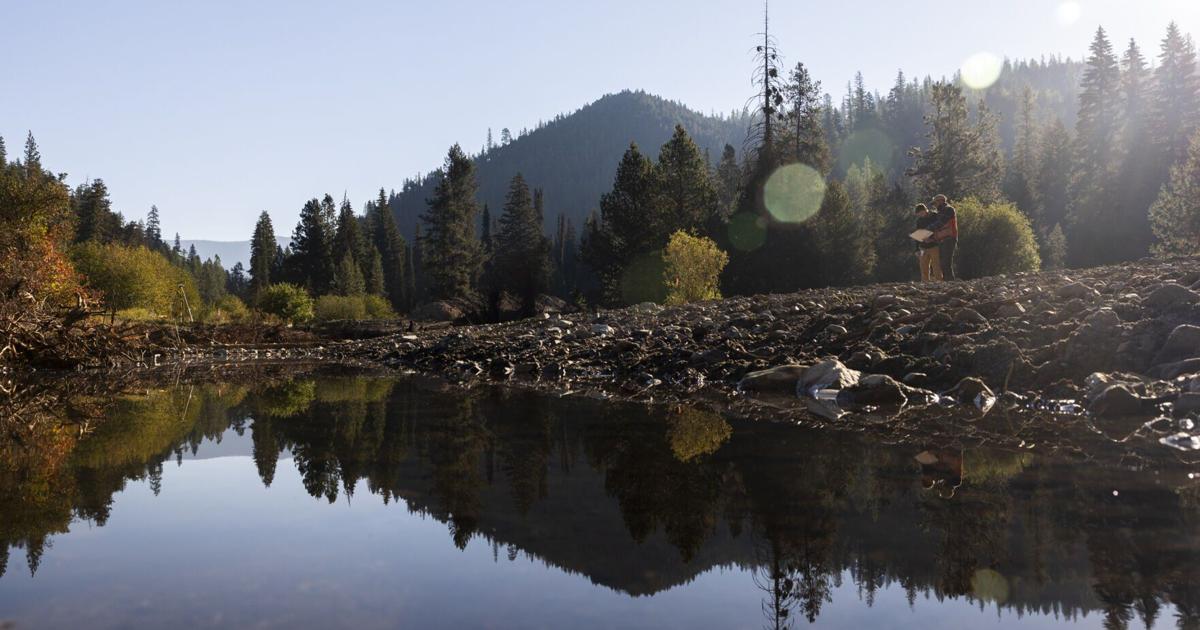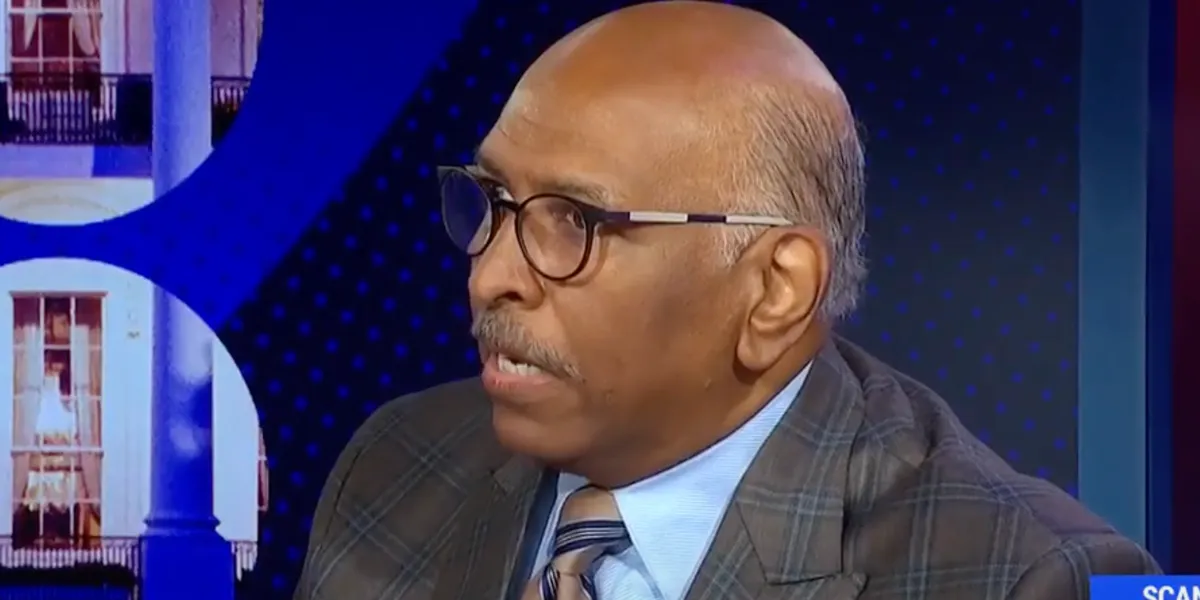
In just a few weeks, excavators will chop through the last tract of dirt separating a half-mile stretch of Lolo Creek from a recently-constructed streambed, restoring the streamŌĆÖs flow to its natural channel after a decades-long absence.
The stream restoration project between Lolo Hot Springs and the turnoff to the Jack Saloon is a collaboration between the Forest Service and Trout Unlimited.
On Tuesday, excavators operated by workers with Missoula-based Timberland Excavating were busy moving earth and reconstructing the last stretch of the historic stream bed at the Earl Tennant Campground. A stone’s throw away, Lolo Creek rushed by, running fast and straight along its artificial channel next to Highway 12.
Many years earlier, the creek had been pushed aside to create more pasture, pinned between the highway and a jagged line of concrete riprap to keep it in place.
ŌĆ£The whole floodplain width, the place that floods every two to three years, is about 60 feet ŌĆö basically a bowling alley,ŌĆØ said Rob Roberts, a senior project manager with Trout Unlimited, which is overseeing the work along with the Lolo National Forest.
The artificial configuration offers little cover for aquatic animals and creates ŌĆ£high-energy flows,ŌĆØ as opposed to the meandering path and variation in a natural streambed.
By the ŌĆś80s and ŌĆś90s, fisheries managers and others had noticed the resulting impacts on local fish populations, and attempted some lower-tech fixes. Upstream of the bridge into the Earl Tennant Campground, Roberts pointed to a series of boulders, from one of those earlier attempts. Downstream, the next generation of modifications were a handful of logs to provide holes and scours for fish to occupy.
TheyŌĆÖre only ŌĆ£band-aids,ŌĆØ Roberts said, but they do seem to work, to an extent: when Fish, Wildlife and Parks technicians did an electro-fishing survey to determine the baseline fish populations in that stretch of the creek, the only fish were found near those features.
But what Trout Unlimited and the Forest Service are attempting to create is a wholesale restoration of the creekŌĆÖs natural state ŌĆö if just along one segment, for now.
ŌĆ£WeŌĆÖre re-creating a floodplain and a stream, from valley wall to valley wall,ŌĆØ Roberts said. ŌĆ£So it re-creates the whole system, rather than just little pieces.ŌĆØ
Roberts pulled out a map of the creek ŌĆ£template,ŌĆØ as he calls it. The hyper-detailed rendering of the half-mile stretch includes color-coded shapes outlining the future creek as it follows its historic streambed, along with a low-lying wetland area, which will fill from an overflow channel when the creek reaches high water in the spring.
The location was chosen because of the easy public access to a stretch of river with good potential for fish habitat and a 40-minute drive from Missoula.
Listen now and subscribe: Apple Podcasts | Spotify | RSS Feed | SoundStack | All Of Our Podcasts
ŌĆ£Not only can we re-create this fishery,ŌĆØ he said, ŌĆ£… we can work on this idea of adding more water to the stream through floodplain reconnection.ŌĆØ
They used a LiDAR-equipped drone to map the historic streambed in fine detail. But even before that, he said the old channel was apparent from the change in vegetation, with shrubs, aspen, dogwood and willow more abundant in the low-lying, rich soil.
Beyond better fish habitat, one of the goals of the extensive construction project is simply keeping more water in the stream. Like many creeks draining into the Bitterroot River from the mountains to the west, Lolo Creek periodically runs dry before it hits the river.
Part of that is because of the hydrogeology of the area, which pulls water underground when it hits the Bitterroot Valley, and part is due to the irrigation demands along the way. But climate change is exacerbating drought and heat in western Montana, meaning earlier melt-off and hotter summers are also taking their toll.
ŌĆ£The way that you can deal with that situation naturally is creating a large floodplain, that sucks up water in the spring and releases it slowly in the summer,ŌĆØ Roberts said.
The previous centuryŌĆÖs re-engineering of Lolo Creek cut off as many as 7 miles of its length, by straightening it to follow the highway. Studies have found that for every extra mile added back to the length of a restored stream, one additional acre-foot of water is kept in the creek each day as wetlands and floodplains act as a natural ŌĆ£sponge,ŌĆØ according to Roberts.
Sedge grass, cut up into sod-like rectangles, sits at one part of the site, ready to be replanted in a wetland area. Live plantings of young willows and shrugs are already taking root along the new banks, which are created by criss-crossing cut branches and layering them with gravel and river rocks. Artificial log jams are in place to provide shelter until real ones take their place.
Work started July 1, and Roberts expects the new streambed will be complete by early October, when the construction crews will ŌĆ£flipŌĆØ the water from its current channel into the new one. Then the 15,000 cubic yards of fill thatŌĆÖs accumulated will be placed in the current Lolo Creek bed alongside the highway.
Some of the effects will be immediate: ŌĆ£This habitat is going to be almost immediately two, three, five times as good as what weŌĆÖve been dealing with on the other side,ŌĆØ Roberts said.
Project planners expect the fish will return “almost immediately,” Roberts said, but the larger ecological system of macroinvertebrates and other organisms will take longer to re-establish.
The total length of the section of stream will go from about 1,300 feet to 2,000 feet, Roberts said. ItŌĆÖs a small section relative to the full length of Lolo Creek, and it isnŌĆÖt cheap. The total cost of the project is about $400,000, paid through federal Forest Service funding and contributions from Trout Unlimited and Montana FWPŌĆÖs Future Fisheries program.
But Roberts said it can also serve as a demonstration of a larger concept to downstream landowners who may be interested in pursuing their own restoration projects.
ŌĆ£We have the understanding, we have the technology, we have the equipment to do something like this on a large scale, that we didnŌĆÖt have 30, 40 years ago,ŌĆØ he said.
Sam Wilson is the outdoors and environment reporter at the Missoulian.
Love
0
Funny
0
Wow
0
Sad
0
Angry
0
Be the first to know
Get local news delivered to your inbox!
* I understand and agree that registration on or use of this site constitutes agreement to its user agreement and privacy policy.
Sam Wilson
State Bureau Reporter
Get email notifications on {{subject}} daily!
Your notification has been saved.
There was a problem saving your notification.
{{description}}
Email notifications are only sent once a day, and only if there are new matching items.
Followed notifications
Please log in to use this feature
Log In
Don’t have an account? Sign Up Today



